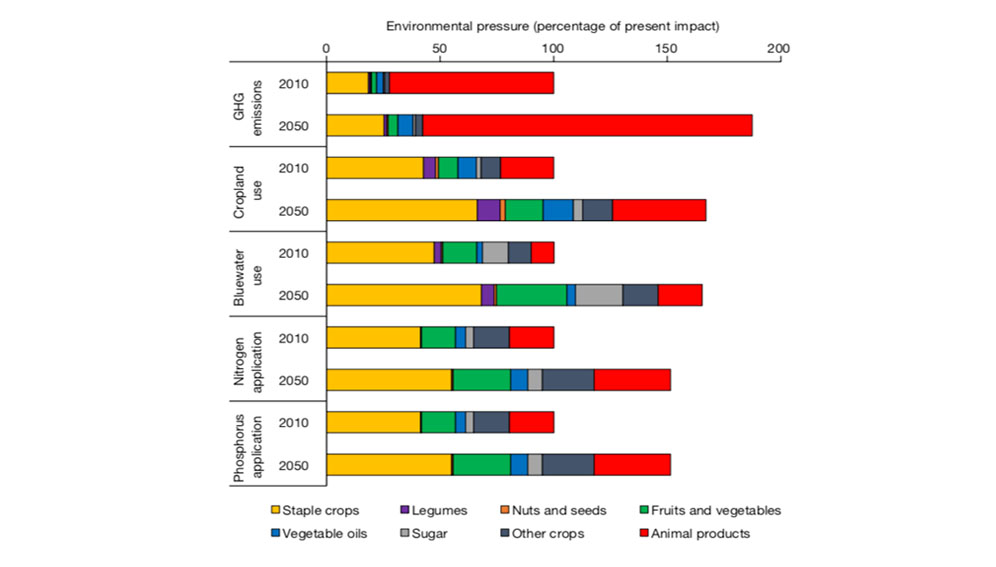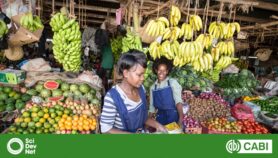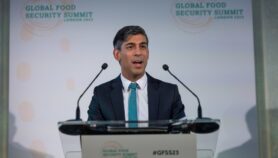By: Barbara Axt
Send to a friend
The details you provide on this page will not be used to send unsolicited email, and will not be sold to a 3rd party. See privacy policy.
Earth has the capacity to feed the world’s population on a healthy diet if countries make fundamental changes to their food production systems and consumption, a study has found.
The study, published in Nature on 10 October, modelled the changes needed to feed 10 billion people while maintaining the global ecosystem. It found that dietary changes, improved farm management, and waste reduction will be necessary to avoid famine and farmland depletion in the future.
If global food production patterns do not change, the environmental impact of food could nearly double by 2050, the researchers warned. The resulting loss of forest, desertification and water stress would accelerate climate change and could cause irreversible damage to wide stretches of farmland, the model found.
“Tackling food loss and waste will require measures across the entire food chain, from storage, and transport, over food packaging and labelling to changes in legislation and business behaviour that promote zero-waste supply chains”
Fabrice de Clerck
“We propose a flexitarian diet,” says lead researcher Marco Springmann, who works for the Nuffield Department of Population Health at the University of Oxford, United Kingdom. This would mean eating less red meat and more plants.
The researchers propose that red meat should feature only once a week in people’s diet, but that the consumption of pulses, nuts and legumes, which contain high amounts of proteins, should be stepped up. If these changes could be rolled out globally, greenhouse gas emissions from farming would be reduced by half, they say.
Springmann told SciDev.Net that agriculture itself also needs to be revised to prevent land depletion “Really ambitious technological changes and improvements in management are essential to avoid crossing planetary boundaries for land use, water use and fertilizer application,” he says.
Springmann adds that these changes would be particularly beneficial in the developing world, where better irrigation technology, water storage, and education would make a big difference to agricultural yield and reduce loss from draught.

1. Illustration: Present (2010) and projected (2050) environmental pressures on five environmental domains divided by food group (source: Nature)
In the study, the researchers pointed to the large amount of food that is wasted in industrial agriculture and said this was another potential for improvement. Around one-third of all food grown and reared for humans is lost during production and transport, or wasted in households and during industrial food processing, they said. Their models showed that, if this figure could be halved, it would reduce the environmental impact of food production by 16%.
“Tackling food loss and waste will require measures across the entire food chain, from storage, and transport, over food packaging and labelling to changes in legislation and business behaviour that promote zero-waste supply chains,” says Fabrice de Clerck, director of science at EAT-Lancet Commission, the foundation that funded the research.
Springmann adds that “very strong and progressive” government regulation would be necessary to achieve the proposed transformations. He also emphasises the need for new dietary guidelines, many of which still encourage the consumption of red meat and large amounts of bread and dairy products. “The [guidelines] we have today are outdated and don’t reflect current evidence on healthy eating,” he says.
Zitouni Ould-Dada, deputy director at the climate division of the UN’s Food and Agriculture Organization, praised the study for highlighting the importance of reducing food loss and waste. He agrees that the solution depends on an international integrated effort.“820 million people suffer from hunger in the world every year, and this figure is increasing,” he says. “We have the tools to solve this problem, but we need a synergetic and coordinated effort, not only from governments, but also from the consumer.”
But, Ould-Dada pointed out, such efforts must ensure that smallholder farmers, who form the largest part of the agricultural community in the developing world, are included in such efforts. Otherwise, he said, these farmers, especially women, could be left vulnerable compared to large agriculture corporations.
This piece was produced by SciDev.Net’s Sub-Saharan Africa English desk.














